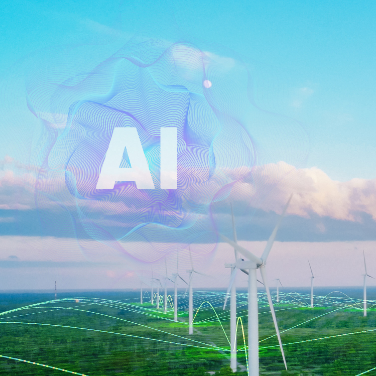AI and the Future of Scientific Discovery
By Kylie Wolfe
From early computers like the Harvard Mark I to present-day programs like ChatGPT, artificial intelligence, or AI, has existed in one form or another for many decades. But it wasn’t until recently that it became popular and accessible. Now, as you further your science, you can do so with a little help from AI.
Today, AI is being used to help scientists combat environmental concerns, boost lab productivity, and shape the future of discovery. As you find where AI fits into your science, learn how it’s making progress possible and more efficient for others.
Understanding Climate Change
To help fight climate change, scientists at Dryad are using AI to train sensors that can detect forest fires before they intensify. These sensors detect gases released by organic material when it burns, essentially serving as nature’s fire alarm. As of January 2024, the company had 50 sensors in place around the world.
Forest service experts are also using data science, powered by AI, to help determine where to set controlled burns, intentional fires meant to help eliminate excess vegetation that would otherwise fuel wildfires. AI helped scientists create a smart assistant that uses topography, vegetation, and weather information to recommend future controlled-burn locations.
Similarly, researchers at Climate TRACE are using a program that combines computer vision and machine learning to identify emissions from factories and other facilities. This helps corporations and policymakers collect data and maintain accountability in areas of interest.
"Today, AI is being used to help scientists combat environmental concerns, boost lab productivity, and shape the future of discovery."
Accelerating Lab Work
AI is also advancing science by looking at meaningful trends in large datasets, predicting outcomes based on data, and simulating complex scenarios before real-world experiments are conducted, according to Victor Dzau, National Academy of Medicine president who spoke at the Artificial Intelligence for Scientific Discovery workshop hosted by the National Academies.
Basically, it’s increasing productivity by making data science, a tedious part of the research process, more efficient. Self-operating labs, for example, are primarily operated by robots and have the potential to aid in faster discoveries and processes. This may lead to advancements in electronics or pharmaceuticals that would otherwise have taken much longer.
AI is even helping scientists conduct literature reviews. Through PaperQA and Elicit, tools that use large language models (LLMs), you can scan and summarize articles to help inform a new hypothesis or approach. Letting AI translate significant amounts of information can be a time saver in the short term and a shortcut to much bigger ideas down the line.
Shaping Your Science
As technology continues to play a critical role in the advancement of science, it’s helpful to understand the full picture to ensure that it’s adding value to your process and not causing harm elsewhere.
For example, it’s important to note that while AI is helping researchers fight climate change, it may also be contributing to it. Each type of AI—machine learning and LLMs alike—requires a different—and potentially large—amount of energy to complete a task. A study published in Joule found that, by 2027, AI could use over 85 terawatt hours of electricity each year. According to Scientific American, this is similar energy usage to that of a small country.
Whether you use AI for simple daily tasks or to increase the productivity of complex workflows, this technology is undoubtedly making it easier for scientists like you to innovate and reach new heights.
Kylie Wolfe is a Thermo Fisher Scientific staff writer.
